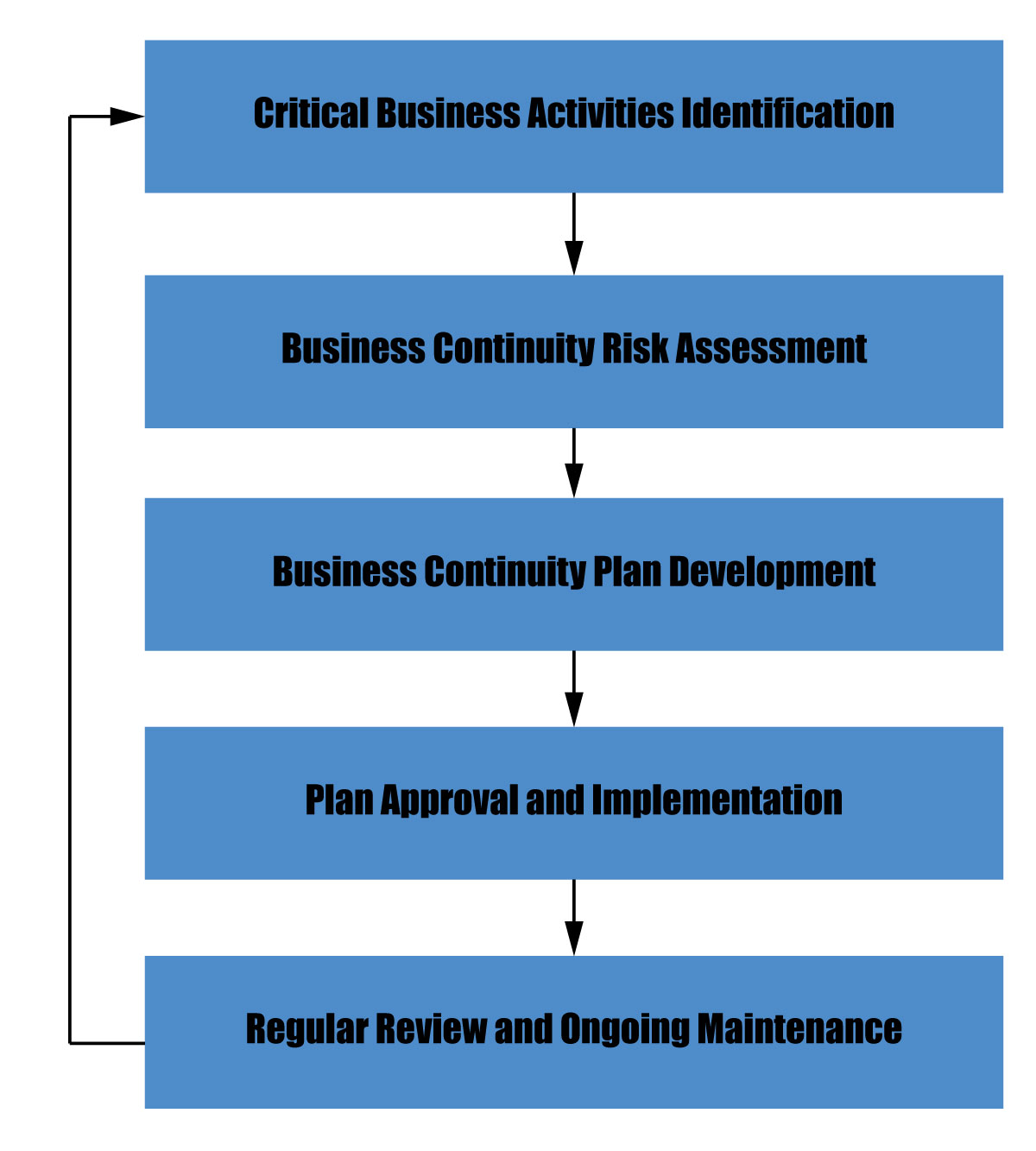Business Continuity Plan
This involves the development of a Business Continuity Plan (BCP) designed to ensure the recovery of critical business activities from natural or man-made failures or disasters to an acceptable level within a predefined time frame, thereby minimising the impact of losses to the organisation. Implementing a BCP is essential for every business.
Business continuity planning involves the following five major processes:

It is crucial to understand where a company needs to focus on in order to recover in case of an incident. The first step in business continuity planning is to identify the most critical business activities to your company's survival. You need to have a good understanding of your business, including its objective, products, services, resources, facilities, suppliers, customers, and their interdependencies.
Critical business activities are those that must be present to sustain the continuity of business, where failing to performing them would lead to:
Once the critical activities are identified, you should perform analysis on each of them to determine the priority and objective on the recovery of critical business activities based on their importance to the company's achievement of strategic goals. Typical questions to be considered include:
For each of the critical business activity identified, it is also necessary to find out all the supporting resources needed to perform the activity and the effect on the business of the unavailability of the resources. Listed below are the areas of resources you should consider:
A disaster could happen to any company – no matter the business size. Risk assessment on critical business activities should be conducted, identifying possible risks and assessing the likelihood and impact of disruptive events. It is vital that you understand the disruptions that would be disastrous to the running of your business. Different disaster scenarios should be considered, some common threats include:
Risk assessment against different threats may result in different outcomes. Some may require no action, while some require continuity planning to be developed and supported with additional resources. This will help a company to explore the possible effects of disaster incidents. After that, risks can be prioritised against objectives relevant to the organisation, including critical resources, impacts of disruptions, allowable outage times, and recovery priorities.
Business Continuity Plan (BCP) allows you to prepare for the worst situation that would keep your business from being operational and to minimise service disruption as well as financial loss. The plan only needs to include the business activities that are most critical to keep your company up and running.
Based on the results from the analysis made on critical business activities and possible risks, you can start developing business continuity and recovery strategies. The selection of strategy may depend upon the criticality of business activities, cost, time for recovery and security.
Listed below are the typical items included in a BCP:
For a small company, a BCP may be simply a printed manual stored safely away from main working location, with emergency contact information, location of offsite data backup storage media, copies of insurance contracts, and other critical material necessary for survival of the business.
The purchase of suitable insurance may be considered as part of the overall business continuity process to recoup losses from risks that cannot be completely prevented or controlled. The decision to obtain insurance should be based on the likelihood and degree of loss identified. Please note that insurance should not be treated as a substitute for an effective BCP since it does not deal with the recovery of business.
Before the plan is put into practice, testing should be conducted to ensure it is effective. Testing may include simulations, business process test, technical recovery and resumption testing, recovery processes testing at alternate site, supplier facilities and services testing etc.
Once a Business Continuity Plan (BCP) is developed, it is important that endorsement should be sought for approval and support.
Points to note during the implementation of BCP:
In order to validate the business continuity arrangements, testing, review and ongoing maintenance should be conducted regularly to ensure they are up-to-date and effective.
Points to note during the implementation of BCP:
